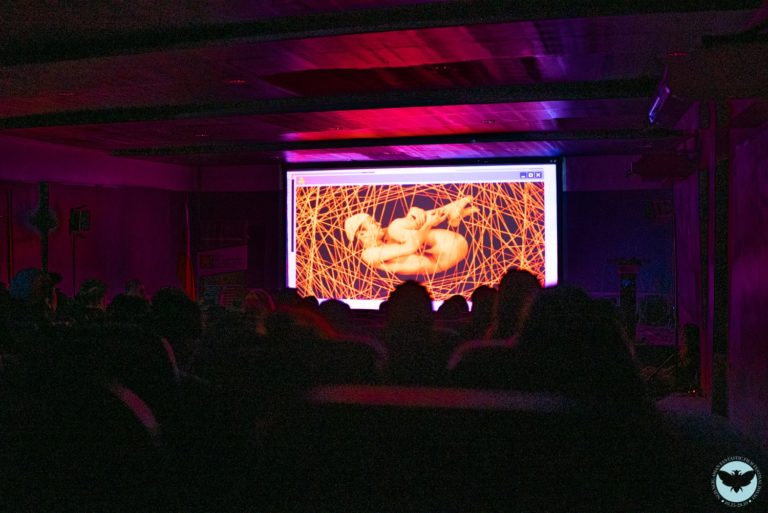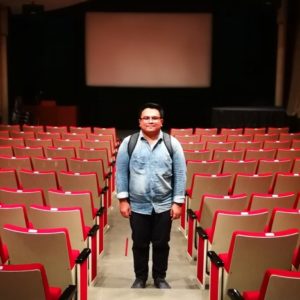
When the invitation to write something for this platform came via email, I was not up to task. Our small purok (a subunit of barangay) was then under a 14-day hard lockdown, after an entire household—two houses away from where we stay—tested positive for COVID-19. I had the option to stay at a colleague’s place so that I could continue working with better internet connection and a relatively safer environment. But I decided to stay with my family, in Purok San Vicente, located in one of the densely-populated districts of Davao City. I decided to subject myself in the mandatory rapid antibody test the health professionals will be conducting as part of the lockdown measures, given my constant exposure to public spaces and the lingering uncertainty of how the virus can really be contracted.
This is me now picking up the writing task faced by just an anxious cursor in a blank canvas waiting to be filled with words. And yet the pandemic is still raging. Many are still succumbing to the insidious stealth by which the virus has attacked us, our personal and social lives, our ways of making a living, our ways of creating, our ways of simply being. Even trying to make sense of things is a chore. While trying to begin this task, I remember what New Yorker columnist Masha Gessen wrote about the difficulty of trying to articulate our experience in isolation, that these are “internal and intimate” and “difficult to know whether they should be put into words.” During the 14-day lockdown, I decided to make a “lockdown film.” So I started recording random things: from the demolished neighborhood space seen from my window to conversations with our isolated neighbors in a nearby quarantine facility. The impulse of documentation was taking over the loss for words. I think about what Jonas Mekas said in his short film Travel Songs which I watched in Mubi during the same lockdown period: “I have no choice but to keep filming.”
In Bisaya, the word for continue is padayon. In the past months since the pandemic started, I have heard this word many times. From friends in group chats or Zoom meetups. It is the frequent reply to the question: how does one live these days? Padayon lang. But to say padayon in the context of our uncertain and challenging times means more than just sailing through the waves. It is to soldier on with the weight of our shared struggles. It is to persist in while still trying to resist the new normal. Padayon may also be the operative word of making-sense.
Despite the opportunity to continue to write film reviews in two outlets—a column for Mindanao Times and a periodic contribution to New Durian Cinema—I was only able to slog through three submissions over the past months since the pandemic started. And even the content of these reviews dealt with the shift to virtual consumption of films via online streaming platforms. In a special feature for New Durian Cinema, filmmaker Teng Mangansakan and I asked film professionals in Southeast Asia the question: how will the pandemic reshape cinema? The variety of responses also mentioned this shift, but while we are witnessing an increase in online consumption, the changing pattern in spectatorship has been inevitable in our ubiquitous digital present. The pandemic may have just accelerated it, instigating a new normal of sorts. But with this reality, cinema and cinema-makers also should confront a more pressing question, that of cinema’s role in our lives now in the precarious present.

In December 2015, when we formed Pasalidahay, a collective of filmmakers and film enthusiasts in Davao City, it was the idea of an alternative space to watch and discuss regional films and cinema that brought it to fruition. Pasalidahay grew from intimate gatherings in drinking places to school-based screenings in different parts of Mindanao. In February this year, before the quarantine halted all physical gatherings, we brought Mindanao short films to screenings in the University of the Philippines, Manila and the Polytechnic University of the Philippines through the support of Manila-based friends and partners. It was more than three months before we were able to mount an online version of Pasalidahay in June, perhaps after much respite and mulling over our individual anxieties. We showcased LGBTQ short films from four young Mindanao filmmakers in time for the June Pride month. The screening was followed by a talkback session.
While the digital platform offers some semblance of interactivity, what we were able to do that we have not done in most of our screenings was to do a panel discussion with the filmmakers being present. I am also involved in the talkback sessions of the Mindanao Film Festival 2019 online reruns which run this August. An ongoing project that started in June was the Minda Salida podcast produced by Karma Sulu and co-hosted by John Bengan of the Young Critics Circle, where we talked about Mindanao films and interviewed Mindanao filmmakers. As of this writing, we are also planning for an online, scaled-down version of Ngilngig Asian Fantastic Film Festival for this year.

The physical space has been hijacked by the digital space as more online film screenings and events happen as we go further into this pandemic. From initiatives like the Lockdown Cinema Club to Quarantimes: Short Films from the Regions, the virtual shift presents to us a potential alternative model of distribution of independent and non-mainstream films while also posing the challenge of totally redefining our cinema experience. While I find myself spending more time watching films on my laptop and now through Netflix and other streaming platforms, I am occasionally reminded of cinema as a collective experience – Few years ago, I was watching the Korean blockbuster Train to Busan, and last year, I was inside a packed special screening of the metafictional, film-within-a-film horror-comedy One Cut of the Dead, as part of the Japanese Film Festival or Eigasai in Davao.
For the longest time, cinema has thrived on the sociality of its experience. Whether it is in the spectacle of both films shared by a packed theatre audience or in the hushed post-screening talks in corners of alternative spaces that Pasalidahay has mounted screenings in, I continue to ponder on the role of film viewership and film programming as social engagement, and the role of the film programmer is now challenged with the absence of the physical-social space of cinema. The film programmer who has dealt with the discursive placement of the programmed films now also has to resist the glitches, gaffes and gaps of digital platforms.

And yet, padayon. The collaborative spirit of regional cinema which has enabled it to thrive amidst the pervasiveness and perversion of the mainstream manifested itself with the formation of a regional film network. (For the Mindanao group, the group has referred to itself as a caucus.) Initially, it was in response to the Joint Administrative Order of Film Development Council of the Philippines, Department of Labor and Employment and Department of Health which sets health and safety protocols in film and audiovisual production. What the document failed to consider was the context and conditions of regional film production, which is governed by its own unique logistical setup, not to mention the existing health guidelines of different localities based on the levels of quarantine. The regional film network, meeting in various island groups virtually, was able to put forward a collective stance which will hopefully benefit regional filmmaking.

What was fortified digitally is aimed at being sustained collaboratively. Currently, the secretariat of which Pasalidahay is involved, is working on a draft paper based on an online survey. A rapid needs assessment that will present challenges and put forward recommendations for regional film workers. While some said they want to focus on surviving, a great number of filmmakers, mostly young and aspiring ones, hope that they could continue making films. The response echoes the need of artists in various fields to still be able to create, especially in the regions where filmmaking, like any artistic production, is a form of persisting.



